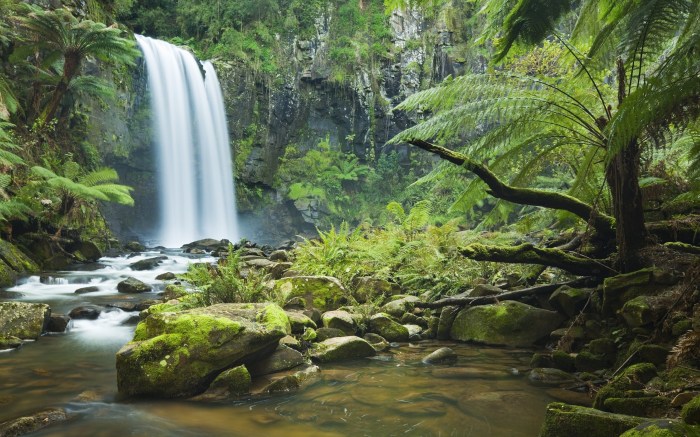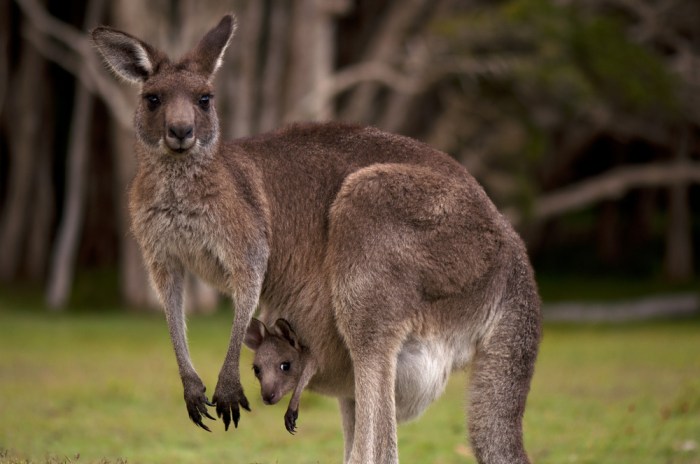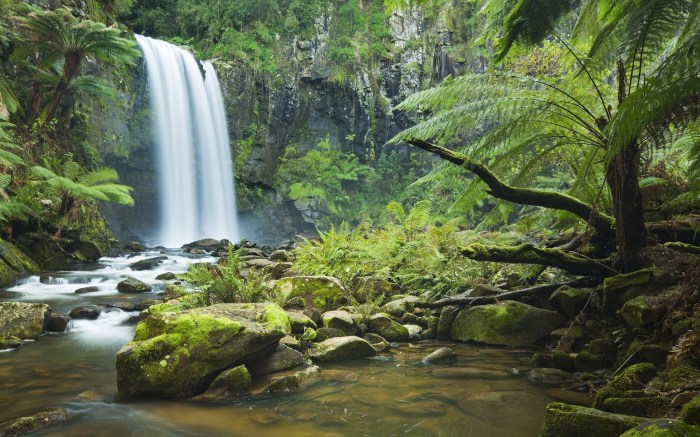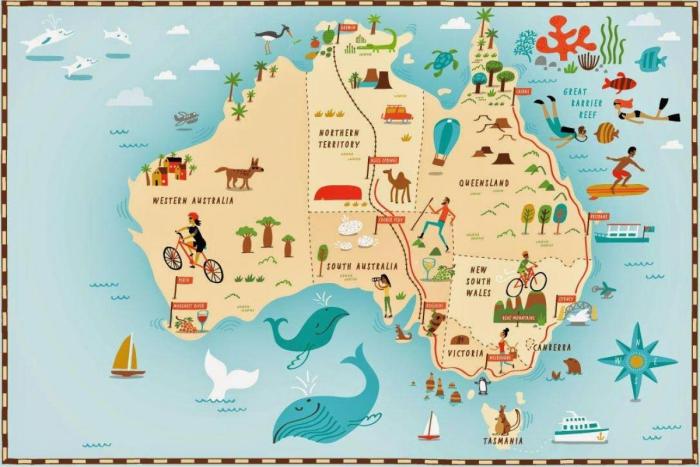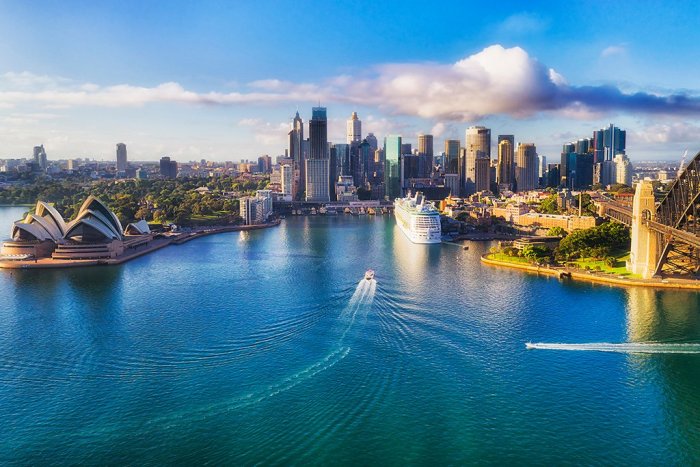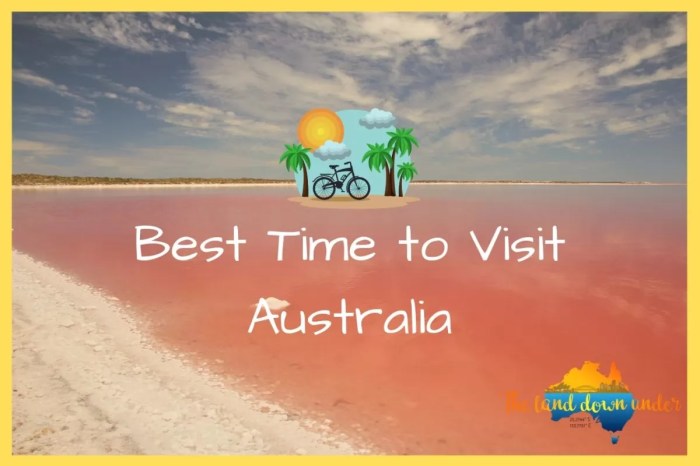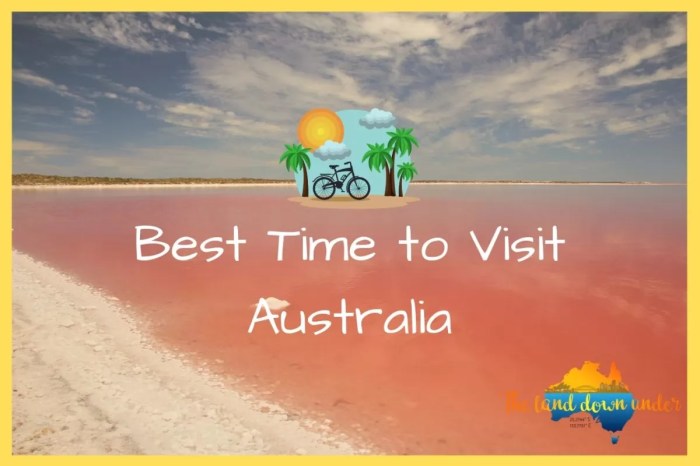Things to do in Perth is a comprehensive guide to exploring this vibrant Australian city. From its stunning outdoor landscapes to its rich cultural scene, Perth offers something for everyone. We’ll delve into outdoor adventures, arts and culture, delicious food, exciting shopping experiences, family-friendly activities, and more. Prepare to be captivated by the stories and experiences this city has to offer!
Discover Perth’s hidden gems and plan unforgettable trips. This detailed exploration will highlight the best of Perth, from historical landmarks to buzzing nightlife, helping you create a personalized itinerary tailored to your interests.
Introduction to Perth
Perth, the capital of Western Australia, is a vibrant city nestled on the Swan River, boasting stunning coastal landscapes and a rich history. Known for its laid-back atmosphere and outdoor lifestyle, Perth offers a unique blend of cosmopolitan energy and natural beauty. From the iconic Kings Park to the pristine beaches of Cottesloe, the city provides ample opportunities for exploration and relaxation.Perth’s strategic location in Western Australia has played a crucial role in its development.
The city’s early growth was intertwined with the region’s resource extraction, particularly gold mining, which spurred significant infrastructure development and population growth. This historical context has shaped Perth’s present identity, with a strong focus on industry, tourism, and a close connection to the natural environment.
Key Attractions and Defining Characteristics
Perth’s diverse attractions cater to various interests. The city boasts beautiful parks, including Kings Park and Botanic Garden, offering expansive green spaces for picnics and leisure activities. The Swan River provides scenic views and opportunities for boating, kayaking, and cycling. Perth’s proximity to the Indian Ocean offers access to pristine beaches and coastal walks. This combination of urban amenities and natural beauty contributes to the city’s unique character.
Historical Evolution and Significance
Perth’s history is deeply rooted in the exploration and settlement of Western Australia. The establishment of the city in 1829 marked a significant turning point in the region’s development. Early settlers established agricultural and mining industries, paving the way for the city’s growth. The discovery of gold in the mid-19th century further accelerated Perth’s expansion, transforming it into a major regional hub.
The city’s significance lies not only in its historical context but also in its enduring spirit of innovation and resilience.
Cultural Influences Shaping Perth’s Identity
Perth’s cultural identity is a blend of diverse influences. The city’s initial settlers brought with them British traditions, which are still evident in its architecture and social norms. Over time, Perth has attracted people from various backgrounds, contributing to a rich tapestry of cultural experiences. From vibrant festivals celebrating international traditions to diverse culinary offerings, Perth’s cultural mosaic reflects its cosmopolitan nature.
Perth is awesome for a getaway! From exploring the city’s vibrant culture to enjoying the stunning Swan River, there’s plenty to do. For those seeking island adventures, checking out trip ideas island vacations best time to visit can help you plan the perfect escape. Ultimately, whether you’re into city exploration or island hopping, Perth offers something for everyone.
Comparison to Other Major Australian Cities
| City | Perth | Sydney | Melbourne | Brisbane |
|---|---|---|---|---|
| Leisure Activities |
|
|
|
|
This table provides a concise overview of leisure activities in each major Australian city. The differences highlight the unique character and appeal of each destination. The emphasis on outdoor activities and natural beauty is a prominent characteristic of Perth, setting it apart from other cities with their own unique attractions.
Outdoor Activities in Perth
Perth, a city nestled against the stunning backdrop of the Indian Ocean, offers a plethora of outdoor adventures for every taste and interest. From hiking through ancient forests to gliding across the waves, the city’s natural beauty provides an unforgettable experience for visitors and locals alike. Embrace the diverse landscapes and discover the unique charm of Perth’s outdoor spaces.
Popular Outdoor Activities by Location
Perth’s diverse locations provide a range of outdoor activities. Exploring the city’s parks and reserves, beaches, and surrounding natural areas offers a variety of experiences, from relaxing strolls to challenging hikes.
- City Centre Parks: Kings Park and Botanic Garden, Elizabeth Quay, and the Perth Mint offer scenic walks, picnic spots, and opportunities for observing local flora and fauna. These spaces provide a respite from the urban environment, offering beautiful views and tranquil atmospheres.
- Coastal Areas: Cottesloe Beach, Scarborough Beach, and Trigg Beach offer stunning views of the Indian Ocean. These locations are ideal for swimming, surfing, sunbathing, and enjoying the vibrant beachside atmosphere. The soft sand and crystal-clear water make these areas a favorite for families and water sports enthusiasts.
- Surrounding National Parks: The Swan Valley, and various national parks surrounding Perth provide opportunities for hiking, camping, and wildlife viewing. These areas boast diverse ecosystems, from forests to wetlands, providing a range of experiences and the chance to witness local wildlife in their natural habitat.
Best Times to Experience Outdoor Adventures
The best time to experience Perth’s outdoor activities depends on the specific activity. Summer offers ideal conditions for beach activities, while cooler months are perfect for hiking and exploring national parks.
- Summer (December-February): Warm weather makes the beaches ideal for swimming, surfing, and water sports. However, be prepared for higher temperatures and potential crowds.
- Autumn (March-May): Pleasant weather and fewer crowds make autumn an excellent time for hiking, picnicking, and exploring the parks and reserves. The foliage often displays vibrant colors during this season.
- Winter (June-August): Cooler temperatures and lower humidity make winter a great time for hiking and exploring the parks and reserves. Some beaches might be less crowded during this time. Be sure to dress in layers for varying temperatures.
- Spring (September-November): Spring marks the beginning of the warm weather season, and the arrival of many flowers in the parks and reserves. It is an excellent time for outdoor activities as the weather is generally mild.
Comparing Perth Parks and Reserves
Perth boasts a variety of parks and reserves, each with its own unique characteristics. Kings Park and Botanic Garden is a sprawling urban oasis, while the surrounding national parks offer more remote and secluded experiences.
- Kings Park and Botanic Garden: A large urban park, Kings Park offers diverse walking trails, stunning views of the city, and a variety of flora and fauna. The Botanic Garden showcases diverse plant life from around the world, making it an educational and scenic destination.
- Swan Valley: Known for its vineyards and wineries, the Swan Valley also offers scenic trails and opportunities for outdoor pursuits. Wine tasting and picnics in the picturesque vineyards make it a popular weekend destination.
- Rottnest Island: A ferry ride away, Rottnest Island is a haven for wildlife viewing and outdoor recreation. Known for its quokkas, this island provides stunning beaches and nature trails. The island’s accessibility by ferry makes it a great option for a day trip.
Necessary Equipment for Outdoor Pursuits
Appropriate equipment is crucial for a safe and enjoyable outdoor experience. From hiking boots to sunscreen, careful preparation can enhance your adventure.
- Hiking: Hiking boots, comfortable clothing, water bottles, sunscreen, and a hat are essential for exploring Perth’s trails. Depending on the trail’s difficulty, you may need additional equipment like hiking poles.
- Watersports: For water activities, swimwear, sunscreen, a hat, sunglasses, and appropriate water shoes or sandals are recommended. If participating in surfing or other activities, consider renting boards or other necessary equipment.
- Camping: For camping trips, a tent, sleeping bag, cooking equipment, and necessary food and water supplies are vital. It’s also important to pack appropriate clothing for varying weather conditions.
Best Outdoor Activities for Different Interests
This table summarizes the best outdoor activities for different interests in Perth.
| Interest | Activity | Location |
|---|---|---|
| Hiking | Swan Valley trails, Kings Park | Various parks and reserves |
| Wildlife Viewing | Rottnest Island, national parks | Coastal areas and national parks |
| Watersports | Surfing, swimming, kayaking | Beaches |
| Picnics and Relaxation | Kings Park, Cottesloe Beach | Parks and beaches |
Arts and Culture
Perth boasts a vibrant arts and culture scene, offering a diverse range of experiences for visitors and residents alike. From world-class galleries and museums to captivating performances and festivals, the city truly comes alive with artistic expression. This exploration delves into the city’s impressive collection of art, its thriving performing arts sector, and the cultural events that shape the Perth experience.Perth’s commitment to arts and culture is evident in the extensive programs and facilities dedicated to showcasing artistic talent and fostering appreciation for different art forms.
This commitment is not only a source of entertainment but also a driving force in shaping the city’s identity and fostering a strong sense of community.
Notable Art Galleries and Museums
Perth offers a rich tapestry of art experiences, housed in prominent galleries and museums. The Art Gallery of Western Australia, for instance, features an impressive collection spanning various periods and styles, including significant Indigenous Australian art, as well as European and Asian works. The WA Museum is a must-visit for those interested in the natural history, cultural heritage, and scientific wonders of the region.
The impressive collections provide insight into the state’s history and the remarkable natural environment.
Performing Arts Venues
Perth’s performing arts scene thrives within several prestigious venues. The Perth Concert Hall, a stunning architectural marvel, hosts a wide range of performances, from classical music concerts to contemporary dance pieces. The His Majesty’s Theatre is a historical landmark, offering a unique experience for audiences. These venues are crucial for hosting and promoting local and international artists.
Cultural Events and Festivals
Perth is known for its vibrant calendar of cultural events and festivals. The Fringe World Festival, a major highlight, presents a diverse range of performances across various art forms, from theatre to comedy to music. The annual Perth International Arts Festival offers a broader spectrum of artistic experiences, providing a platform for local and international artists to showcase their talents.
These events showcase the dynamism of the city’s cultural life.
Table of Art Forms and Venues
| Art Form | Venue | Description |
|---|---|---|
| Visual Arts | Art Gallery of Western Australia | Extensive collection of diverse art forms, including Indigenous Australian art. |
| Visual Arts | WA Museum | Natural history, cultural heritage, and scientific displays. |
| Performing Arts (Music) | Perth Concert Hall | Classical music, contemporary dance, and other performances. |
| Performing Arts (Theatre) | His Majesty’s Theatre | Historical landmark for theatre performances. |
| Various Art Forms | Fringe World Festival | A major festival showcasing a broad range of performances. |
| Various Art Forms | Perth International Arts Festival | Platform for local and international artists to showcase their talents. |
Unique Cultural Experiences
Numerous places in Perth offer unique cultural experiences. Visiting local markets like the Fremantle Markets allows immersion in the local culture and the opportunity to discover unique handcrafted items. Exploring the city’s diverse neighborhoods, each with its own distinct character and stories, provides a captivating insight into Perth’s multicultural fabric. These experiences offer a deeper understanding and appreciation for the city’s unique identity.
- Fremantle Markets: An opportunity to experience the local culture and discover unique handcrafted items.
- Exploring diverse neighborhoods: Immerse yourself in the city’s multicultural fabric and discover the stories of each area.
Food and Drink: Things To Do In Perth
Perth boasts a vibrant and diverse culinary scene, reflecting its multicultural population and stunning natural surroundings. From fresh seafood to internationally-inspired dishes, there’s something to tantalize every palate. The city’s cafes offer a welcoming atmosphere for a leisurely brunch or coffee, while numerous restaurants provide a sophisticated dining experience. Exploring the local markets is a must for experiencing the freshest produce and unique culinary delights.Perth’s food scene caters to a wide range of tastes and dietary needs.
Local producers and artisanal food makers contribute to the city’s burgeoning foodie culture. You can find everything from traditional Australian fare to global cuisines, all prepared with high-quality ingredients.
Local Specialties
Perth’s culinary landscape is enriched by its proximity to the ocean. Fresh seafood, including prawns, scallops, and oysters, are prominent in the city’s restaurants and markets. Local produce, such as seasonal fruits and vegetables, are often featured in dishes. A variety of meat cuts are also available from local farmers and butchers. These fresh ingredients form the base for many of Perth’s culinary creations.
Best Restaurants and Cafes
Perth offers a wide selection of restaurants, from casual cafes to fine-dining establishments. Many restaurants emphasize seasonal produce and locally-sourced ingredients. A notable example is a restaurant showcasing regional Australian cuisine, with a focus on fresh seafood and farm-to-table dishes. The cafe scene is also thriving, with numerous independent cafes offering specialty coffee and delicious baked goods.
Many cafes have outdoor seating, allowing diners to enjoy the pleasant Perth weather.
Unique Food Markets and Stalls
Perth has several bustling markets that showcase local produce and culinary talents. These markets provide a unique opportunity to sample a range of cuisines, from street food to artisanal products. The vibrant atmosphere and variety of stalls make these markets an exciting experience. The fresh produce is a highlight, with a selection of fruits, vegetables, and local meats.
Restaurants Offering Specific Dietary Needs
Perth’s restaurants are increasingly accommodating diverse dietary needs. Many restaurants offer vegetarian, vegan, gluten-free, and dairy-free options. Restaurant menus often list these options clearly, allowing customers to make informed choices. Many restaurants have developed specialized menus to cater to particular dietary needs, ensuring everyone can enjoy a delicious meal.
Table of Best Restaurants by Cuisine
| Cuisine | Restaurant Name | Description |
|---|---|---|
| Seafood | The Fish Market | A popular spot known for fresh, local seafood, with a lively atmosphere. |
| Australian | The Drover’s | A traditional Australian restaurant featuring hearty dishes and regional ingredients. |
| International | Spice Route | A restaurant offering a wide variety of international cuisines, with dishes from around the world. |
| Vegetarian/Vegan | The Green Leaf | A dedicated vegetarian/vegan restaurant with creative and delicious plant-based dishes. |
Shopping and Retail

Perth boasts a diverse and vibrant retail scene, catering to every taste and budget. From high-street fashion to unique artisan goods, the city offers a delightful blend of shopping experiences. Whether you’re seeking designer labels, quirky souvenirs, or local crafts, Perth has something to offer every shopper. Exploring its various shopping districts is a key part of experiencing the city’s vibrant atmosphere.Perth’s retail landscape is a fascinating mix of large shopping malls, independent boutiques, and artisan workshops.
The city’s focus on both international brands and locally-made goods creates a rich and diverse shopping experience. Whether you’re after a bargain or a unique find, Perth has it all.
Shopping Districts and Malls
Perth’s shopping districts offer a range of experiences, from the bustling atmosphere of high-street malls to the charming ambiance of independent stores. The city’s major shopping destinations cater to different needs and preferences.
- Northbridge: Known for its eclectic mix of shops, boutiques, and cafes. It’s a popular choice for those seeking unique and stylish finds, particularly for fashion-conscious shoppers and those looking for a more local feel.
- Hay Street Mall: This central pedestrian mall offers a wide variety of stores, from major department stores to smaller boutiques. It’s a prime spot for browsing and window shopping, especially during the warmer months when the outdoor seating and lively atmosphere enhance the shopping experience.
- Elizabeth Quay: This waterfront location offers a combination of high-end stores and more affordable options, alongside the city’s vibrant waterfront atmosphere. It’s a prime example of a shopping destination that blends retail with a cultural and social environment.
- High-street Malls (e.g., Myer Centre, Westfield Shopping Centre): These larger malls provide a comprehensive selection of major retailers, making them ideal for one-stop shopping and a wide range of items.
Unique Retail Experiences
Perth offers a range of unique retail experiences beyond the typical shopping malls. The city is home to a thriving independent retail sector, offering a more personalized and unique shopping experience.
- Boutique Stores: These stores showcase smaller collections of high-quality, often designer, items. They provide a more intimate shopping experience, enabling customers to interact with the owner or staff, who can often offer insights into the collections and the brands.
- Artisan Shops: These shops feature handcrafted goods, from jewellery and pottery to textiles and clothing. They provide a glimpse into the city’s artistic community and offer one-of-a-kind souvenirs.
Souvenirs
Perth offers a variety of souvenirs for travellers. From locally crafted items to international brands, there’s something to commemorate your trip.
- Local Crafts: A range of unique items such as Aboriginal art, pottery, and textiles provide a genuine taste of the region’s culture and heritage. These are often highly prized by tourists seeking authentic and memorable souvenirs.
- International Brands: The presence of major international retailers in Perth’s shopping malls allows for a wide selection of imported products, catering to different tastes and preferences.
- Giftware and Accessories: Perth’s shops offer a comprehensive range of giftware, from decorative items to personal accessories, allowing for diverse gift-giving options.
Shopping Budget Comparison
The table below provides a general comparison of different shopping areas in Perth, categorized by the types of stores found in each location.
| Shopping Area | Types of Stores | Price Range |
|---|---|---|
| Northbridge | Independent boutiques, artisan shops, cafes | Variable, generally mid-range to higher |
| Hay Street Mall | Major department stores, high street brands, specialty stores | Variable, from budget-friendly to high-end |
| Elizabeth Quay | Mix of high-end and affordable brands, international retailers | Variable, from affordable to luxury |
| High-street Malls | Major retailers, department stores, cinemas | Variable, budget-friendly to luxury |
Shopping Experiences for Different Budgets
Perth’s diverse retail scene accommodates various budgets. From budget-conscious shoppers to those seeking high-end experiences, the city offers a suitable shopping experience.
Perth is buzzing with amazing things to do, from exploring the stunning Swan River to checking out the vibrant nightlife. However, it seems that even the best nightspots need to be mindful of safety, as evidenced by the recent debate around London’s Fabric club needing to hire sniffer dogs or close down. This raises some interesting questions about responsible club management.
Luckily, Perth offers plenty of safe and exciting entertainment options, keeping the good times rolling.
- Budget-conscious shoppers: Northbridge and certain sections of the Hay Street Mall, along with smaller shops in the city centre, often offer a wide selection of items at more affordable prices.
- Mid-range shoppers: Hay Street Mall, Elizabeth Quay, and many high-street stores provide a good balance of quality and price.
- Luxury shoppers: Major department stores and high-end boutiques in the city centre, and specific areas of Elizabeth Quay, cater to luxury shoppers.
Family Activities
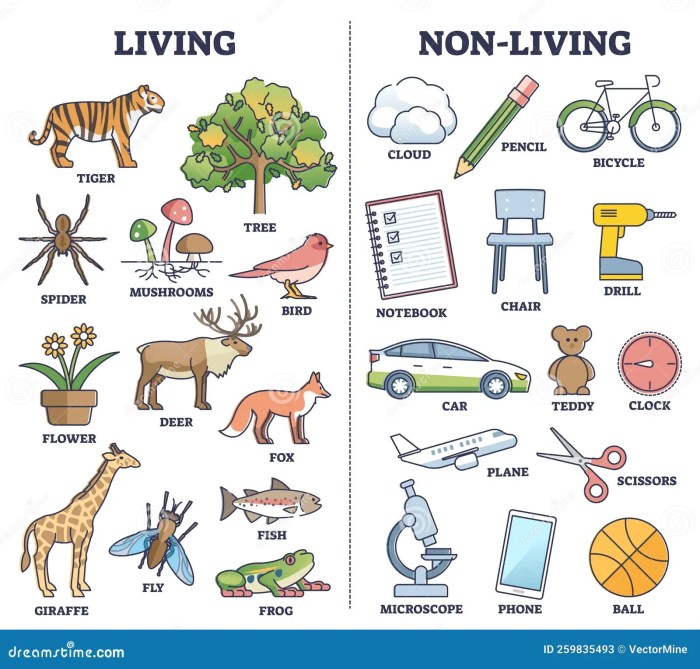
Perth offers a fantastic range of family-friendly attractions, ensuring memorable experiences for all ages. From bustling parks to captivating wildlife encounters, there’s something for everyone to enjoy. Families can create lasting memories through interactive activities, delicious meals, and comfortable accommodations. This section details kid-friendly attractions, parks, zoos, aquariums, and family-friendly accommodations and restaurants.Perth’s vibrant atmosphere is especially welcoming to families, with numerous options catering to different interests and ages.
This ensures that everyone can participate and create positive and shared experiences.
Parks and Outdoor Playgrounds
Perth boasts a network of beautiful parks, offering ample space for children to run, play, and explore. These parks provide opportunities for picnics, games, and relaxation. Kings Park, for instance, is a vast green space with walking trails, picnic areas, and stunning city views. Many parks also feature playgrounds with a variety of equipment for different age groups.
- Kings Park: A sprawling park offering scenic walks, picnic areas, and panoramic city views. It’s a perfect place for families to enjoy the outdoors.
- Perth Zoo: A popular destination for animal lovers, featuring a diverse collection of animals from around the world. This is a great place for kids to learn about wildlife and nature.
- Burswood Park: A significant park that provides diverse recreational options for all age groups. It includes playgrounds, walking paths, and open spaces for activities.
Zoos and Aquariums, Things to do in perth
Perth Zoo is a significant attraction, housing a diverse range of animals from around the world. The zoo’s exhibits are designed to educate and entertain, making it a worthwhile educational experience for children. Likewise, the aquarium offers a unique opportunity to observe marine life in a controlled environment.
- Perth Zoo: A renowned zoo showcasing a wide array of animals, offering interactive exhibits and educational programs. It’s a perfect blend of entertainment and learning.
- Western Australian Museum’s Aquarium: A captivating space featuring diverse marine species from around the globe. The museum provides fascinating insights into the world’s oceans and aquatic ecosystems.
Children’s Museums and Interactive Exhibits
Interactive exhibits are a fantastic way to engage children and foster a love for learning. These museums typically feature hands-on activities that stimulate curiosity and encourage exploration.
- Science Centre WA: This centre offers a range of interactive exhibits, demonstrating scientific concepts through engaging displays and hands-on activities. Children can experiment and discover scientific principles.
- KidZania Perth: This unique entertainment centre allows children to experience different professions in a simulated city environment. It’s an excellent choice for children interested in trying out various careers.
Family-Friendly Accommodations and Restaurants
Perth has a variety of family-friendly accommodations to choose from, ranging from cozy apartments to luxurious hotels. These accommodations typically offer amenities designed for families, such as cribs, high chairs, and family rooms. Similarly, many restaurants offer kid-friendly menus and spacious seating arrangements.
- Family-friendly hotels: Several hotels offer family rooms and amenities, such as kids’ clubs, to cater to families.
- Cafes and restaurants with children’s menus: Many cafes and restaurants in Perth have dedicated children’s menus and provide a welcoming atmosphere for families.
Family Activities by Age Group and Interest
| Age Group | Interest | Activity |
|---|---|---|
| Toddlers (1-3 years) | Parks and Playgrounds | Kings Park, playgrounds with soft surfaces |
| Preschoolers (3-5 years) | Interactive Exhibits | KidZania Perth, Science Centre WA |
| School-aged children (6-12 years) | Animals and Nature | Perth Zoo, Western Australian Museum’s Aquarium |
| Teenagers (13-18 years) | Adventure and Exploration | Kings Park, cycling trails, city tours |
Accommodation Options
Perth offers a diverse range of accommodation options to suit every budget and preference. From luxurious hotels to budget-friendly hostels, you’re sure to find a place that meets your needs. Consider factors like location, amenities, and your travel style when choosing your accommodation. This section details the various choices available, allowing you to make an informed decision.Perth’s accommodation scene reflects the city’s vibrant energy and caters to a broad spectrum of travellers.
Whether you’re a solo adventurer, a couple seeking romance, or a family exploring together, the city provides a suitable place to rest and recharge.
Hotel Options
Perth boasts a selection of hotels, from international chains to boutique establishments. These options generally offer a higher level of comfort and amenities compared to other types of accommodation. Their locations often provide convenient access to attractions, restaurants, and public transportation.
- Luxury Hotels: These hotels, like the Four Seasons or the Crown Towers, offer exceptional service, gourmet dining options, and luxurious amenities such as spas and swimming pools. They are typically situated in central locations, granting easy access to popular attractions. Expect higher price points reflecting the elevated standards and service.
- Mid-Range Hotels: A considerable number of hotels fall within this category, offering a balance of comfort and affordability. They provide a good standard of service and amenities, often located in areas with easy access to public transport. Examples include hotels in the city centre and near major shopping districts.
- Budget Hotels: Budget-conscious travellers will find various options in this category, providing basic but functional accommodations. They are often situated outside the city centre, but still accessible by public transport. Expect a lower price point reflecting the more basic facilities.
Hostel Options
Hostels are a popular choice for budget travellers and those seeking a social atmosphere. They often feature shared dormitories, private rooms, and communal kitchens, creating opportunities for interaction with other travellers. Their proximity to attractions can vary.
- Private Rooms: These rooms offer more privacy compared to shared dormitories. Prices for private rooms in hostels typically fall within the mid-range, sometimes comparable to budget hotels, depending on the location and amenities.
- Shared Dormitories: Shared dormitories are the most budget-friendly option. Expect a lower price point than private rooms, and amenities like shared kitchens and bathrooms. Hostels are frequently situated in central locations, allowing easy access to attractions.
Unique and Themed Accommodations
Perth features unique and themed accommodations that offer an alternative experience. These include options designed for specific interests, providing a distinctive stay. Consider these accommodations for travellers seeking a memorable experience.
- Boutique Hotels: These hotels offer a curated experience, combining style and comfort. They are typically situated in areas with a distinctive character, like the city centre or historic districts.
- Serviced Apartments: Serviced apartments are a popular choice for extended stays. They provide a home-like atmosphere with kitchens, laundry facilities, and often a living room. Expect a higher price point compared to hostels, reflecting the additional amenities and space.
- Guesthouses: Guesthouses provide a more personal and welcoming environment, often with a home-like feel. They frequently offer a variety of room options, including private rooms and suites. Expect a range of price points depending on location and amenities.
Accommodation Comparison Table
| Accommodation Type | Location | Price Range (approx.) | Amenities |
|---|---|---|---|
| Luxury Hotel | City Centre | $$$ | Spa, fine dining, concierge service |
| Mid-Range Hotel | City Centre/Suburbs | $$ | Restaurant, swimming pool, gym |
| Budget Hotel | Suburbs/Outside City Centre | $ | Basic rooms, shared facilities |
| Hostel (Private Room) | City Centre | $$ | Shared kitchen, common areas |
| Hostel (Shared Dorm) | City Centre | $ | Shared kitchen, common areas |
| Serviced Apartment | City Centre/Suburbs | $$$ | Kitchen, laundry, living area |
Transportation
Getting around Perth is a breeze, thanks to its well-developed transport network. Whether you’re exploring the city centre, heading to the beaches, or venturing out to regional areas, you’ll find a suitable option to suit your needs and budget. From efficient public transport to convenient ride-sharing services, Perth offers diverse ways to navigate its diverse landscapes.Perth’s transport system caters to a wide range of travellers, from tourists seeking an affordable and convenient option to locals needing a flexible mode of transport.
Understanding the nuances of each transport mode will help you plan your trip effectively and make the most of your time in the city.
Public Transport
Perth’s public transport system, primarily comprising buses and trains, is comprehensive and reliable. A significant benefit is the integrated ticketing system, making it easy to move between modes of transport. This seamless integration simplifies travel planning, especially for those covering extensive distances.
- Bus routes: Perth’s extensive bus network connects various parts of the city, suburbs, and even some regional areas. Real-time bus tracking apps provide helpful information on estimated arrival times, allowing you to plan your journey efficiently. This is particularly valuable during peak hours or when travelling to less frequent routes.
- Train services: The train network is a crucial component, offering direct links between the city centre and surrounding suburbs. Commuting by train is generally quicker than buses, particularly for longer distances. This is a vital consideration for daily commuters and tourists wanting to reach specific locations.
Taxi and Ride-Sharing Services
Perth offers a variety of taxi and ride-sharing options. These services provide convenience, especially for those needing door-to-door transport or short-distance travel, or when needing a flexible alternative to public transport. These services are often more expensive than public transport, but provide a quicker and more personalized travel experience.
- Taxi services: Taxis are readily available across the city, offering a reliable mode of transport. They are a good option for those travelling to less accessible areas, or when public transport isn’t readily available. However, taxi fares can fluctuate depending on the distance and time of day. Always check the meter and confirm the fare before embarking on a trip.
- Ride-sharing services: Ride-sharing apps provide an affordable alternative to taxis. They offer flexibility and are a convenient option for individuals or small groups needing transport. However, the availability and pricing of these services can vary based on demand and location.
Cost and Schedules
The cost of transport varies significantly based on the mode of travel and the distance covered. Public transport fares are generally affordable, making it an attractive option for budget-conscious travellers. Taxi and ride-sharing fares are typically higher but provide a convenient way to reach your destination promptly.
- Public transport costs: A single trip on Perth’s public transport system can cost from $2.70 to $6.00 depending on the distance travelled. Day passes and weekly/monthly passes provide cost-effective options for frequent users.
- Taxi and ride-sharing costs: Taxi fares are often based on distance and time, and ride-sharing services typically charge per kilometre or based on the time taken to reach the destination. It’s always a good practice to check the pricing structure of the service before initiating a trip.
- Schedules: Public transport schedules are generally well-maintained and updated. Detailed schedules are available online and through mobile apps, making it easy to plan your journey. Taxi and ride-sharing services generally operate 24/7, offering flexibility for travel at any time.
Accessibility
Perth’s transport system provides varying degrees of accessibility to different parts of the city. Public transport, in particular, offers comprehensive coverage across the city, including suburbs and some regional areas. Accessibility for people with disabilities is also a significant factor considered in the design and operation of the system.
| Transport Option | Cost (approx.) | Travel Time (approx.) | Accessibility |
|---|---|---|---|
| Public Bus | $2.70-$6.00 | 30-60 minutes | Good, with some buses specifically designed for accessibility. |
| Public Train | $3.00-$8.00 | 20-45 minutes | Good, with designated accessible carriages. |
| Taxi | $20-$50+ | 15-45 minutes | Varies depending on the taxi and its accessibility features. |
| Ride-Sharing | $15-$40+ | 15-40 minutes | Varies depending on the app and its accessibility features. |
Navigating Perth’s Transport System
Utilizing online resources, mobile apps, and printed maps will simplify navigating Perth’s transport system. Real-time tracking of buses and trains is a significant advantage.
- Online resources: Perth’s public transport website provides comprehensive information on routes, schedules, and fares. This is a valuable tool for planning journeys and understanding the system’s complexities.
- Mobile apps: Various mobile apps offer real-time tracking of buses and trains, providing up-to-date information on estimated arrival times. These apps also allow you to purchase tickets and plan your journeys.
- Printed maps: Printed maps are still a helpful resource, especially for those unfamiliar with the system or wanting a physical representation of the routes.
History and Landmarks
Perth, a city steeped in history, boasts a captivating array of landmarks that tell stories of its past. From the iconic structures that define the skyline to the hidden gems that whisper tales of early settlers, Perth’s historical sites offer a rich tapestry of experiences for visitors. Exploring these places allows a deeper understanding of the city’s evolution and the cultural influences that shaped it.
Perth is awesome, with its stunning beaches and vibrant city life! But if you’re dreaming of island hopping, planning a multi-island trip to Hawaii – Maui, Kauai, Oahu, and the Big Island – is a whole other level of adventure. For expert tips on how to organize a trip like that, check out this great guide on how to plan a multi island trip to hawaii maui kauai oahu big island.
Once you’ve got your Hawaiian getaway sorted, remember Perth has plenty to offer for a memorable trip, like exploring Kings Park and Botanic Garden or indulging in some delicious seafood.
Significant Historical Sites
Perth’s historical sites showcase the evolution of the city, from its colonial beginnings to its modern-day prominence. These locations provide insights into the lives of early settlers, the development of infrastructure, and the growth of the community. These sites offer a tangible connection to the past, allowing visitors to walk in the footsteps of those who came before.
- King’s Park and Botanic Garden: This expansive parkland, encompassing over 1000 acres, serves as a crucial link to Perth’s early history. It was initially part of the Crown Lands granted to the colony, demonstrating the importance of nature within the urban landscape. Its carefully preserved natural beauty provides a tranquil escape amidst the city, while its historical significance highlights the evolving relationship between the city and its natural surroundings.
- Old Government House: This historic residence, built in the 1830s, provides a glimpse into the life of early colonial governors. The building’s architecture and interior design reflect the social customs and priorities of the time. It’s a tangible representation of the city’s early governmental structure and social norms.
- Fremantle Prison: A stark but compelling reminder of the penal colony’s past, this former prison stands as a testament to the challenges faced by early settlers. The building’s architecture reflects the harsh realities of the time, while the stories of those who were incarcerated provide a profound insight into the social and legal systems of the period. It serves as a powerful historical reminder of the city’s evolution.
Architectural Styles
Perth’s architecture demonstrates a diverse range of influences, reflecting the city’s growth and its connections to various cultures. From the imposing neoclassical structures to the modern marvels that now adorn the skyline, the city’s built environment tells a compelling story.
- Federation Architecture: Examples of Federation architecture in Perth often showcase the stylistic features of the period, particularly in residential buildings. These homes usually have ornate details, decorative trim, and symmetrical facades, reflecting the grandeur of the era.
- Modernism: As Perth evolved, modern architectural styles emerged, characterized by clean lines, functional design, and innovative materials. Modern buildings showcase a commitment to contemporary design principles while still fitting into the city’s urban landscape.
- Colonial Revival: Many buildings in Perth exhibit a colonial revival style, often emulating earlier architectural trends. These structures, incorporating elements of classicism and incorporating regional materials, highlight a desire to connect with the city’s colonial heritage.
Must-See Historical Locations
Visiting these locations provides a deeper understanding of Perth’s history and heritage.
- Perth Mint: The Perth Mint, a significant landmark in the city, showcases the evolution of Australia’s gold industry. Its architecture is a blend of practicality and elegance, reflecting the importance of the gold industry to the early Australian economy.
- Curtin House: This impressive building served as the residence of John Curtin, a significant Australian Prime Minister, and is a valuable historical site.
- WACA Ground: This iconic stadium, while primarily associated with sports, holds historical significance as a landmark of sporting heritage in Perth. The building’s design and its historical role are representative of the evolving importance of sports in the city.
Significant Landmarks and Their Historical Context
This table provides a concise overview of significant landmarks and their historical significance.
| Landmark | Historical Context |
|---|---|
| King’s Park | Significant parkland illustrating early colonial grants and the evolving relationship between the city and nature. |
| Old Government House | Reflects the social customs and priorities of early colonial governors and provides insights into the city’s early governmental structure. |
| Fremantle Prison | A reminder of the penal colony’s past, showcasing the challenges faced by early settlers and offering insights into the social and legal systems of the period. |
Nightlife
Perth’s nightlife scene is vibrant and diverse, offering something for every taste. From bustling bars to intimate clubs and live music venues, the city comes alive after dark. Whether you’re looking for a relaxed drink with friends, a dance-filled night out, or a unique themed experience, Perth has it all. Explore the city’s various nightlife districts and discover hidden gems, all while enjoying the city’s laid-back, yet energetic atmosphere.
Nightlife Districts
Perth boasts several popular nightlife districts, each with its own unique character. The city center, particularly around King Street Mall and the surrounding areas, is a hub for bars and pubs, offering a lively atmosphere for socializing and catching up. Fremantle, with its waterfront location and historic buildings, presents a more relaxed and casual vibe, perfect for a relaxed evening out.
Northbridge, known for its diverse range of venues and a more club-focused atmosphere, is another popular choice for those seeking a more energetic nightlife experience.
Types of Venues
Perth offers a range of venues, catering to various preferences. Casual pubs and bars provide a relaxed setting for socializing, often with live music or DJs. Mid-range bars often feature a mix of music styles and crowds. High-end bars and clubs, usually located in prominent districts, typically host events with a more upscale and exclusive ambiance. Live music venues provide a platform for local and international artists, offering a unique and authentic entertainment experience.
Unique and Themed Nightlife Options
Beyond the standard bar and club scene, Perth offers several unique and themed experiences. For example, themed cocktail bars allow guests to indulge in creative cocktails and immerse themselves in a specific atmosphere. Breweries and pubs often host events and tastings, offering a more interactive and culturally enriching experience.
Nightlife Venue Categorization
| Genre | Atmosphere | Examples |
|---|---|---|
| Pubs/Bars | Casual, social, relaxed | The Flying Saucer, The Duke of Wellington |
| Clubs | Energetic, dance-focused | Basement, Metropolis |
| Live Music Venues | Intimate, musical | The Rosemount, The Metro |
| Cocktail Bars | Upscale, creative, themed | The Alchemist, The Botanist |
| Breweries/Pubs | Interactive, tasting, local | Mount Lawley Brewery, The Dog & Duck |
Wrap-Up
Perth, a city that blends natural beauty with urban excitement, promises a memorable journey. This guide provides a starting point for your adventure, highlighting diverse experiences, from thrilling outdoor activities to cultural immersion. Whether you’re a family seeking fun, a foodie craving local delicacies, or a history buff eager to uncover the city’s past, Perth has something extraordinary waiting for you.
Plan your trip now and create lasting memories!

